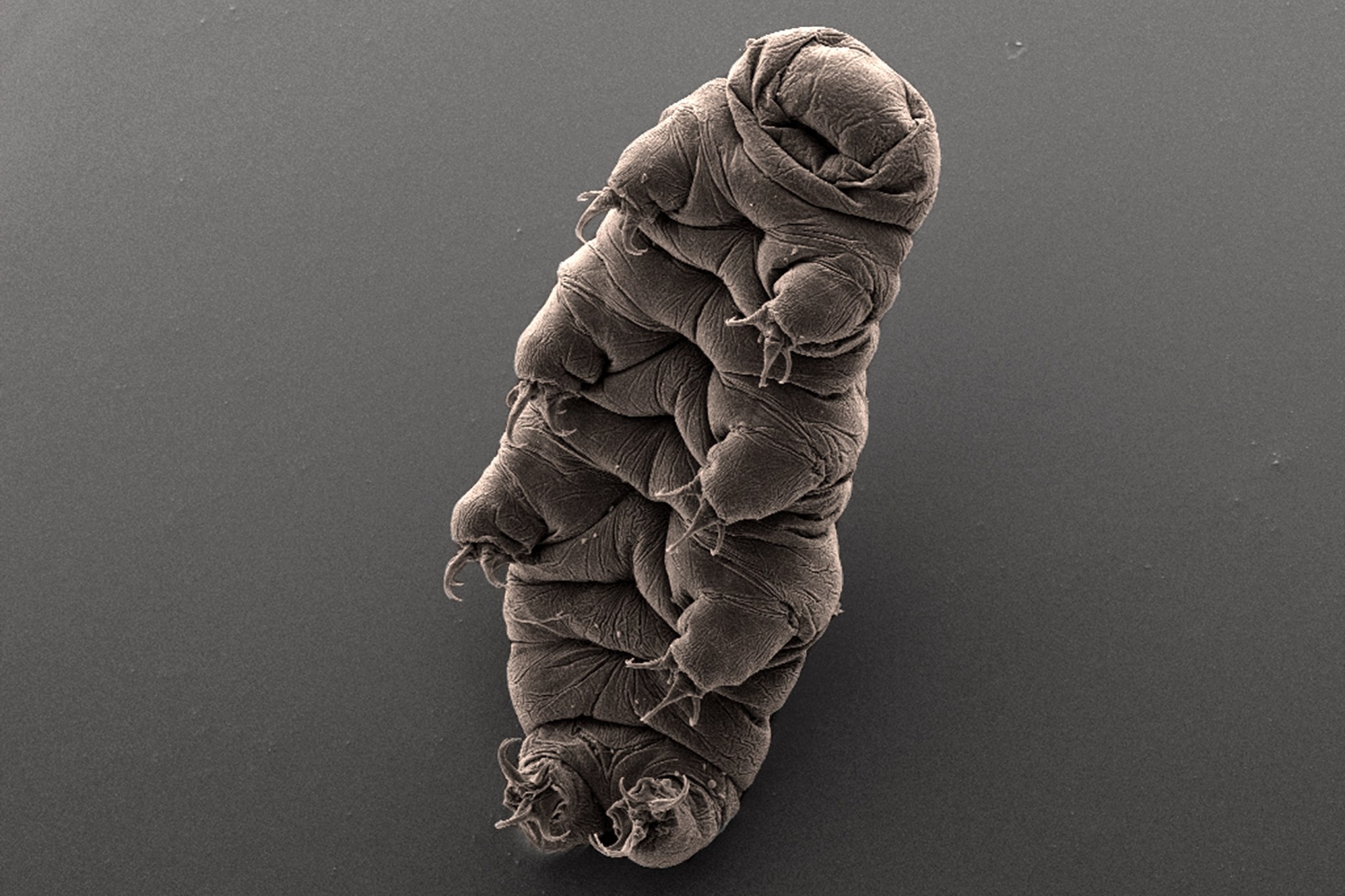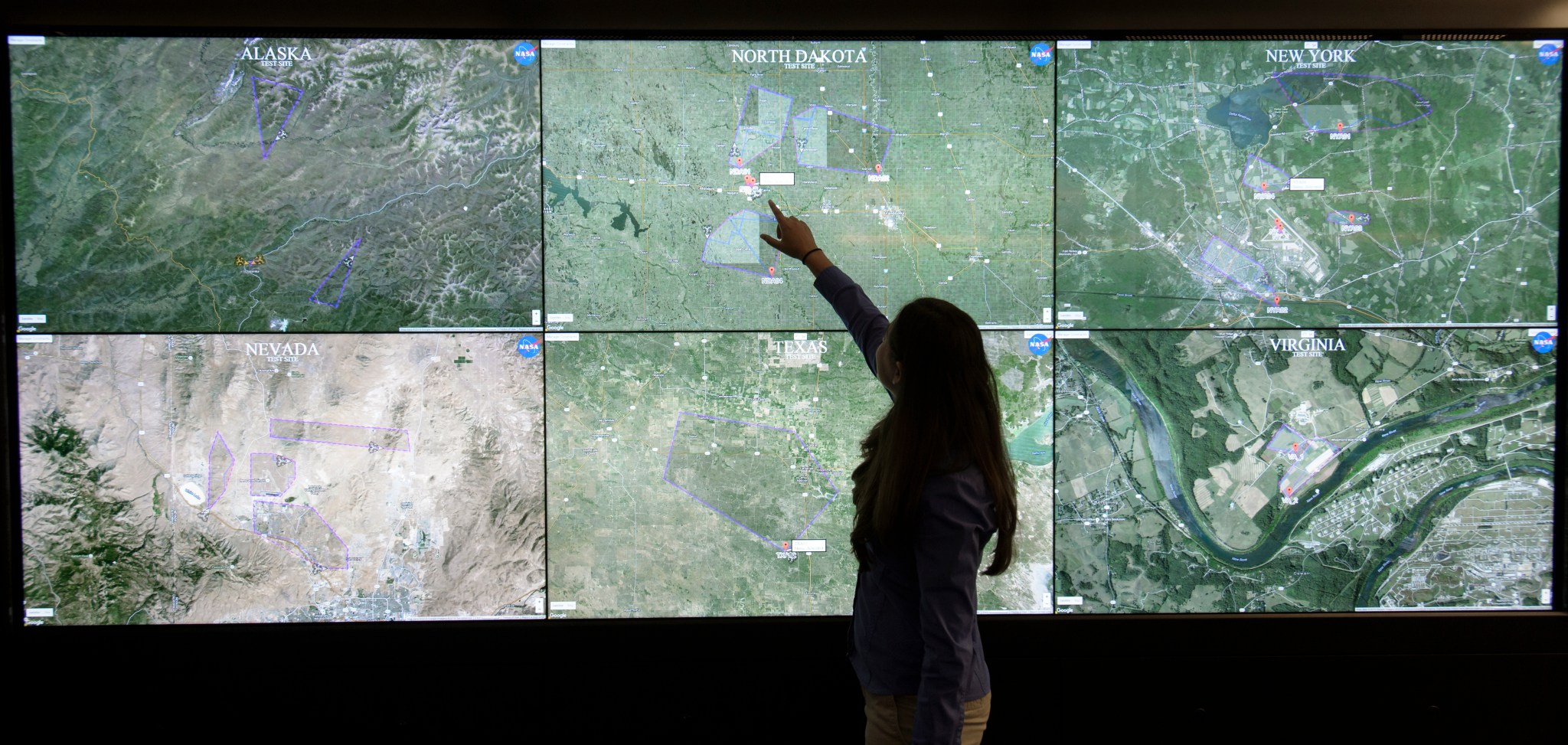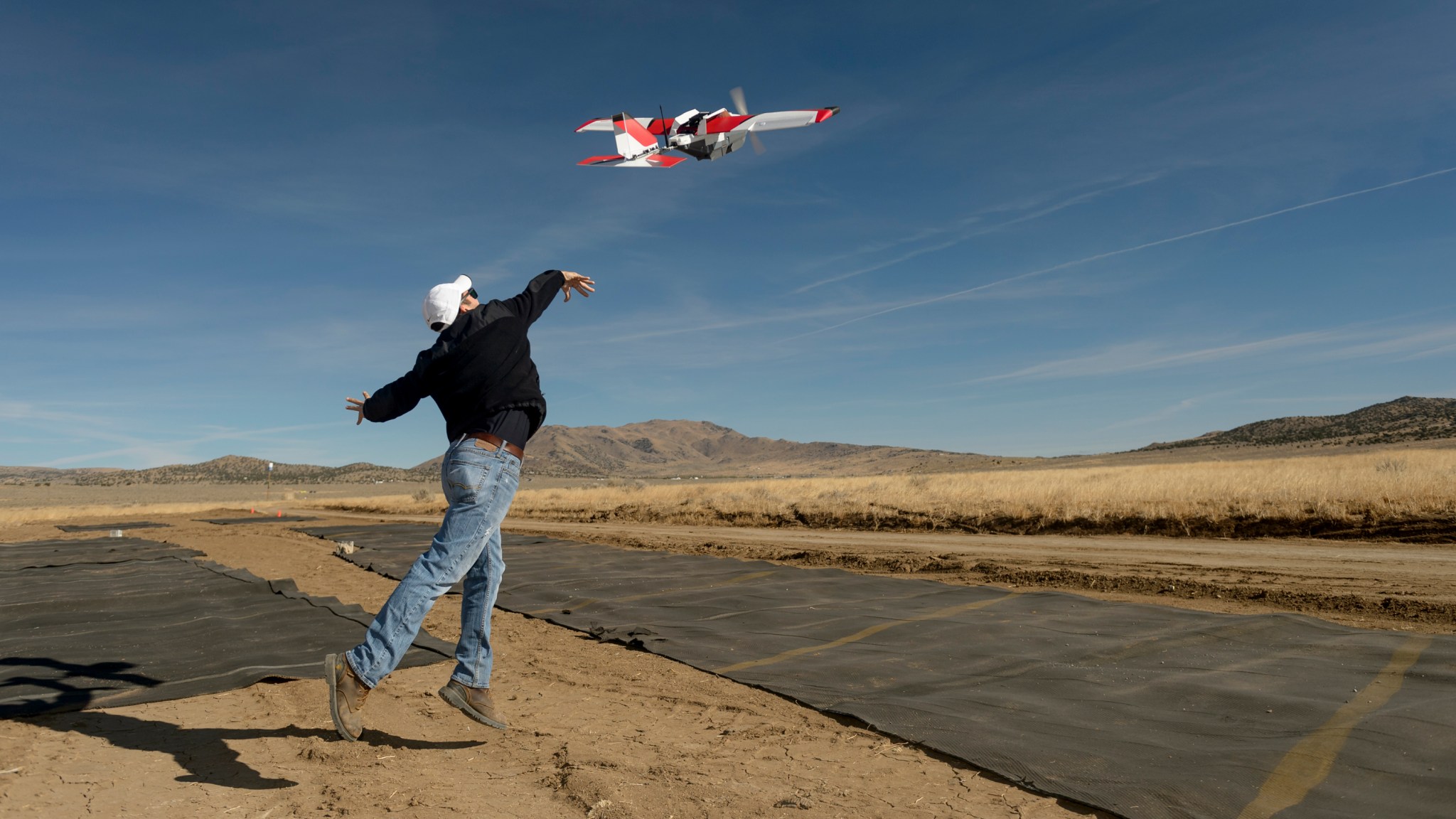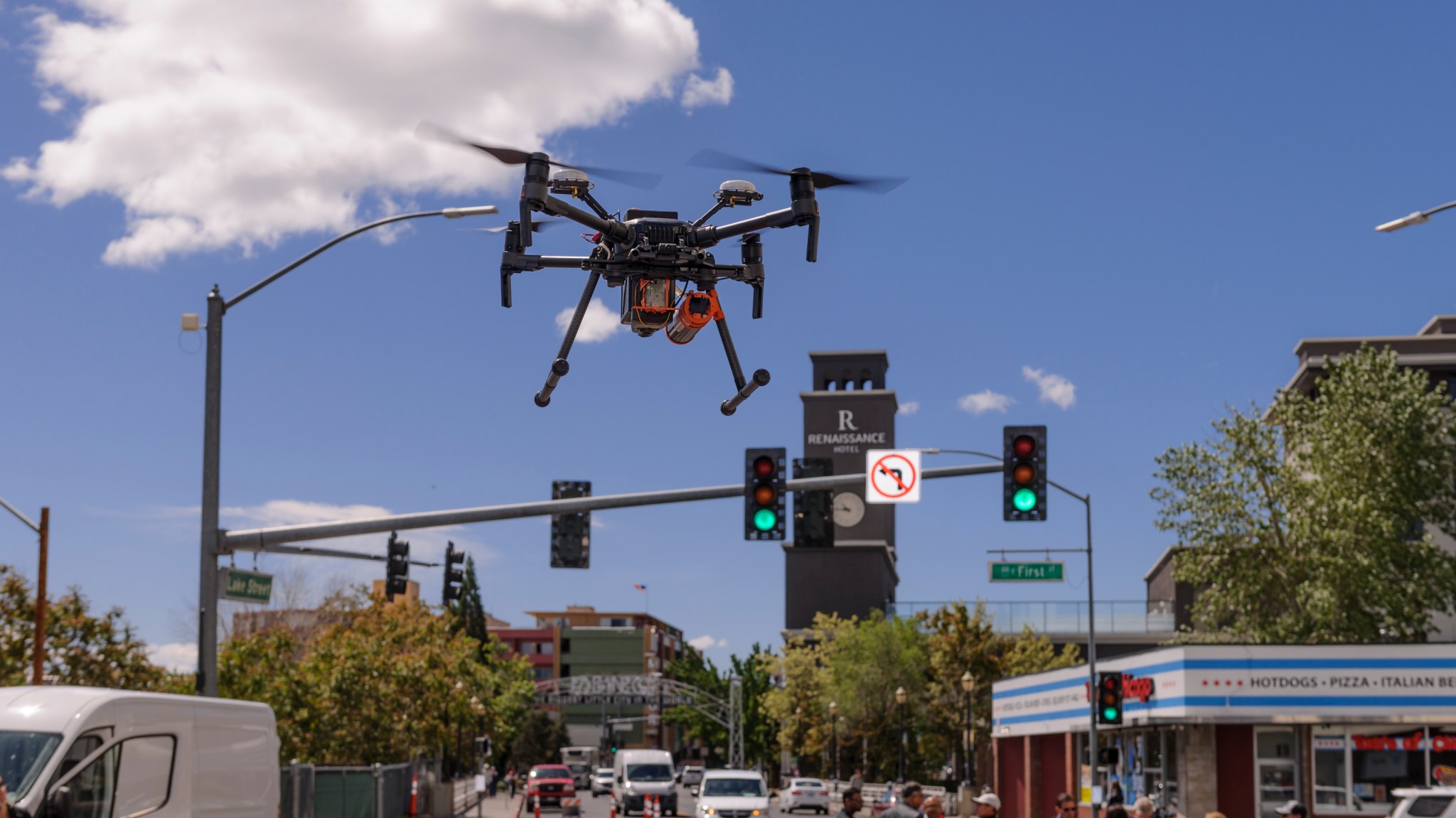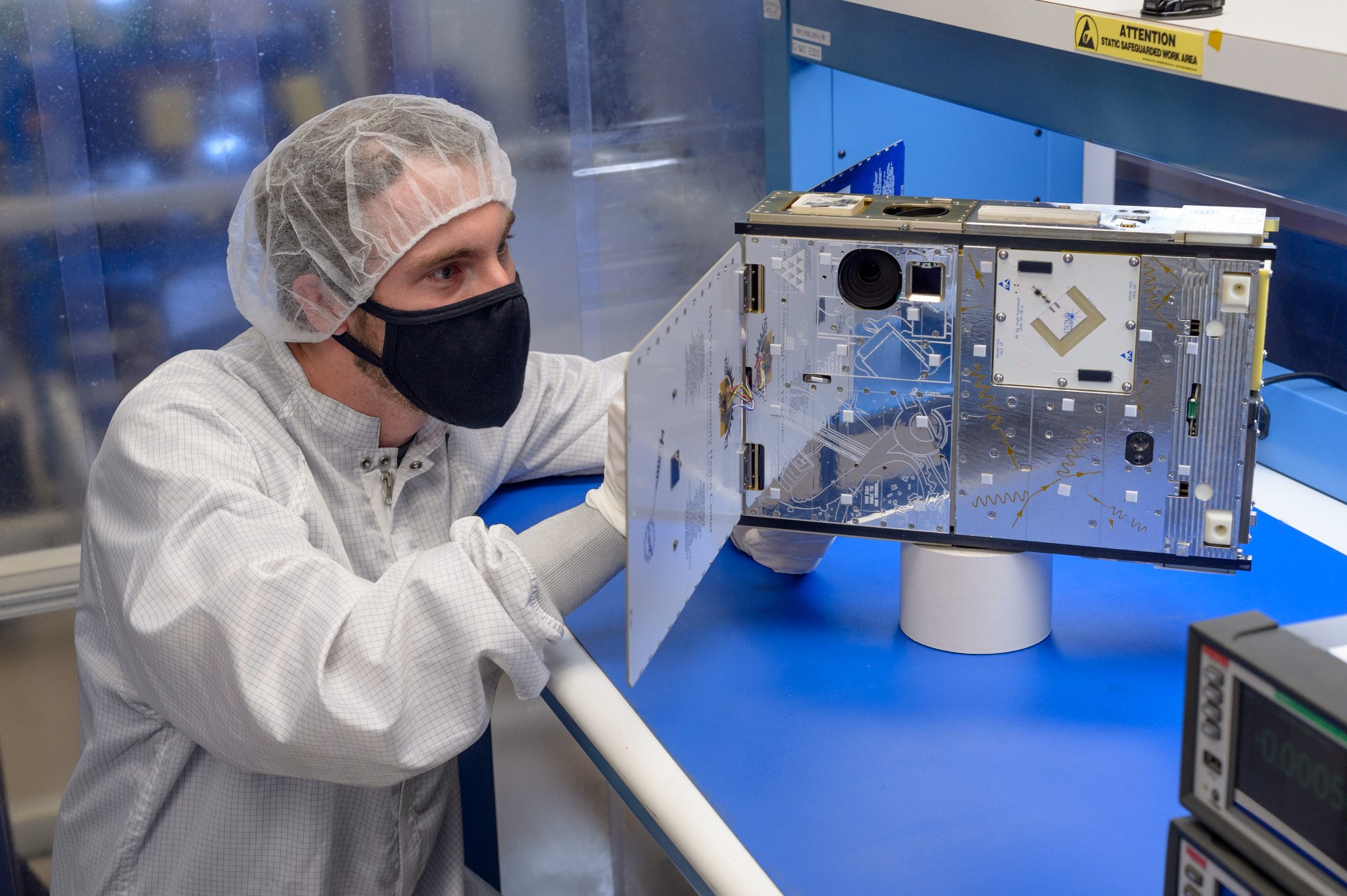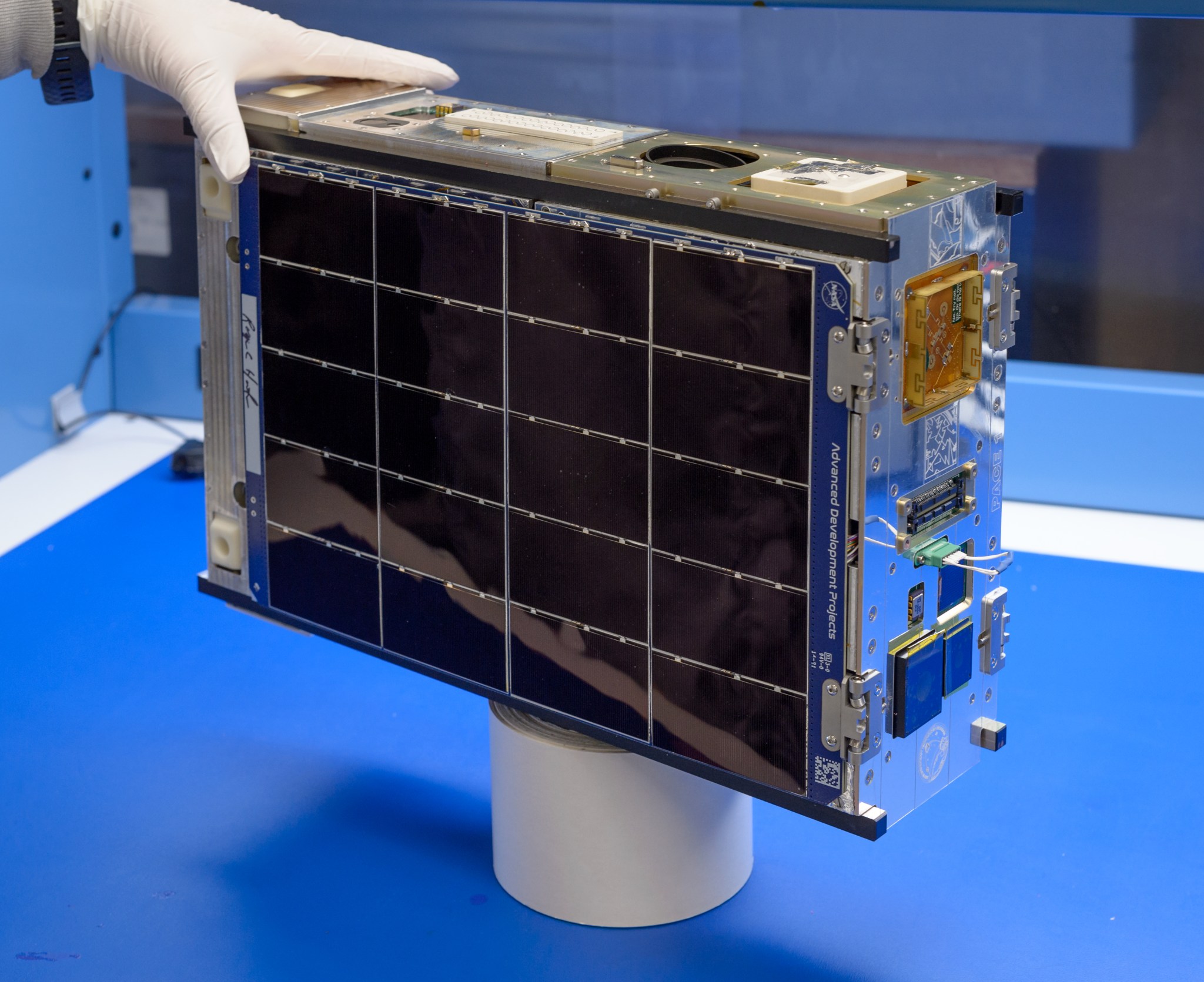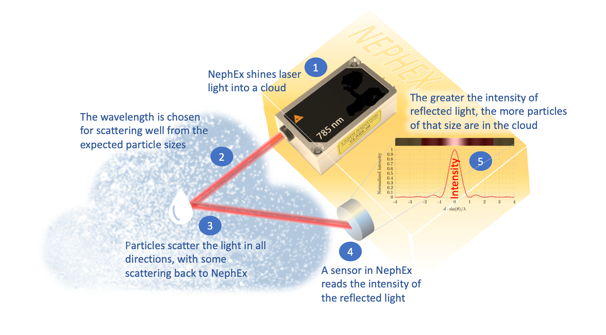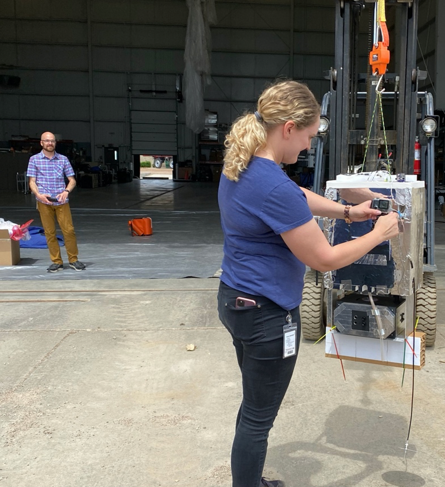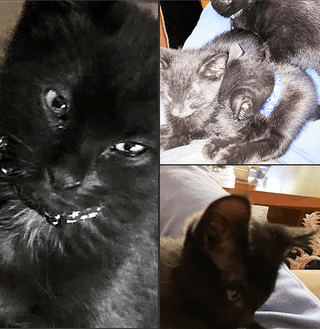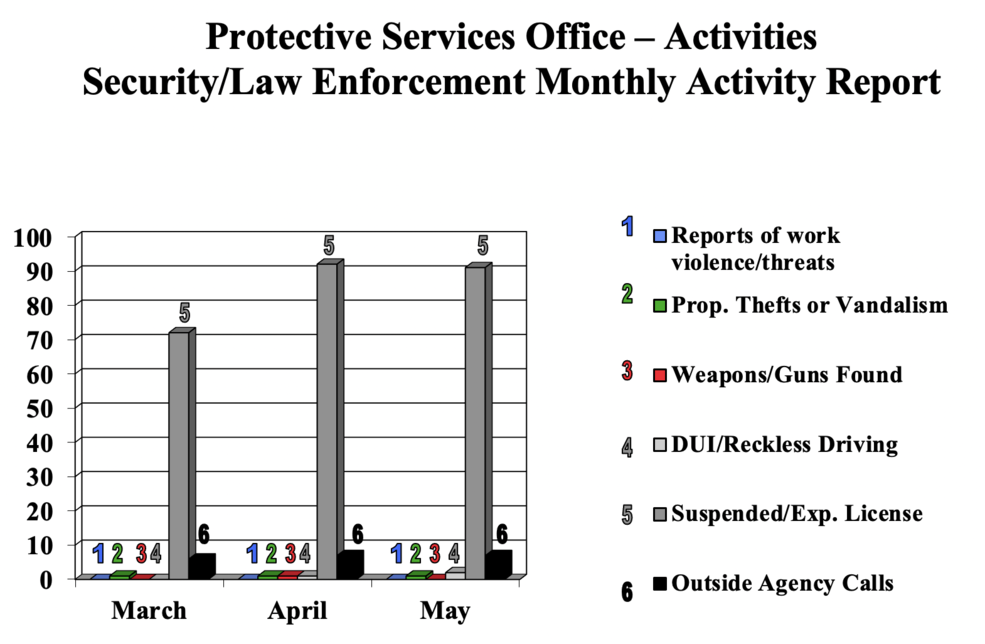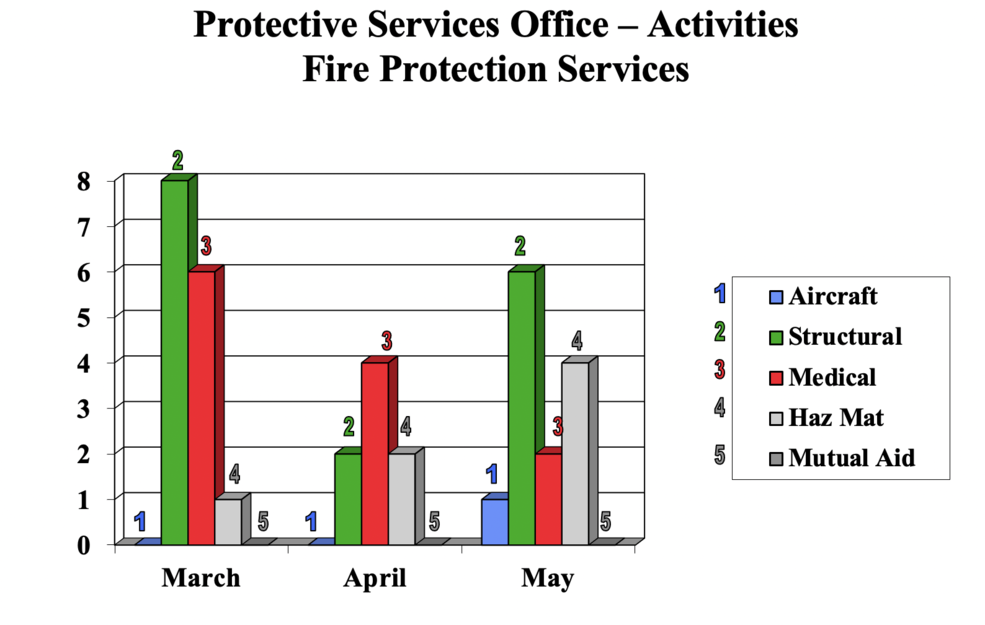June 2021 issue of the newsletter, the Astrogram
Microscopic Superheroes to Help Protect Astronaut Health in Space
by Abigail Tabor
It’s a classic superhero tale: Inconspicuous, underestimated, our hero is revealed to have powers beyond imagination! The hottest and coldest environments on Earth, decades without water, the powerful radiation of space – none of it is any match for…the tardigrade!
This chubby, microscopic, eight-legged animal may be an unlikely hero, but tardigrades, also known as water bears due to their shape under a microscope, possess superpowers when it comes to surviving really harsh conditions. Understanding how they tolerate extreme environments – including the one astronauts experience in space, with microgravity and elevated radiation levels – can better guide research into protecting humans from the stresses of long-duration space travel. An experiment starting aboard the International Space Station, called Cell Science-04, will help reveal how tardigrades do it.
“We want to see what ‘tricks’ they use to survive when they arrive in space, and, over time, what tricks their offspring are using,” said Thomas Boothby, assistant professor at the University of Wyoming in Laramie and principal investigator of the experiment. “Are they the same or do they change across generations? We just don’t know what to expect.”
Credits: NASA/Ames Research Center
One option in the tardigrade bag of tricks could be producing tons more antioxidants to combat harmful changes in the body caused by increased radiation exposure in space.
“We have seen them do this in response to radiation on Earth,” said Boothby, “and we think the ways tardigrades have evolved to withstand extreme environments on this planet may also be what protects them against the stresses of spaceflight.”
The research team will look at what happens with tardigrade genes in space. Knowing which ones are turned on or off in response to short-term and long-term spaceflight will help researchers identify specific ways tardigrades use to survive in this stressful environment. If one solution they have is to turn up the dial on antioxidant production, for example, genes involved in that process should be affected.
Checking which genes are also activated or deactivated by other stresses will help pinpoint the genes that respond exclusively to spaceflight. Cell Science-04 will then test which are truly required for tardigrade adaptation and survival in this high-stress environment.
Data from the space station experiment will also offer a comparison for Earth-based research. The latter is more common and less costly, and uses simulated spaceflight conditions to study tardigrade responses. The current experiment will tell researchers how similar those conditions are to actual spaceflight.
The tiny heroes of Cell Science-04 won’t be the first spacefaring tardigrades to join an astronaut crew. They have already been shown to survive even the vacuum of space when exposed outside the space station for an experiment. This time, they’ll be on board living and reproducing inside special science hardware developed for the station by NASA’s Ames Research Center in California’s Silicon Valley, which also manages the mission. Called the Bioculture System, the hardware lets scientists carry out long-term studies of cultures of cells, tissues, and microscopic animals in space by allowing real-time, remote monitoring, and finer control over the conditions in which they grow.
In the long run, revealing what makes tardigrades so tolerant could lead to ways of protecting biological material, such as food and medicine from extreme temperatures, drying out, and radiation exposure, which will be invaluable for long-duration, deep-space exploration missions. That’s superhero-size potential for the teeny tardigrade.
Dr. Boothby’s research is supported by NASA’s Biological and Physical Sciences Division.
Turning Up the Heat on Orion’s Heat Shield…x2!
by Abigail Tabor
When NASA astronauts return from the Moon during the Artemis missions, their spacecraft will blast through Earth’s atmosphere at more than 25,000 miles per hour. At that screaming-fast speed, the Orion crew capsule will trigger two forms of heating – convective and radiant – that its heat shield must contend with to protect the spacecraft and crew. For the first time, Orion’s heat shield material was simultaneously tested with both kinds of heating at NASA’s Ames Research Center in California’s Silicon Valley. The April 2021 series of tests confirmed that Orion’s heat shield system performs as expected when exposed to the combined heating and certified it for the Artemis lunar missions.
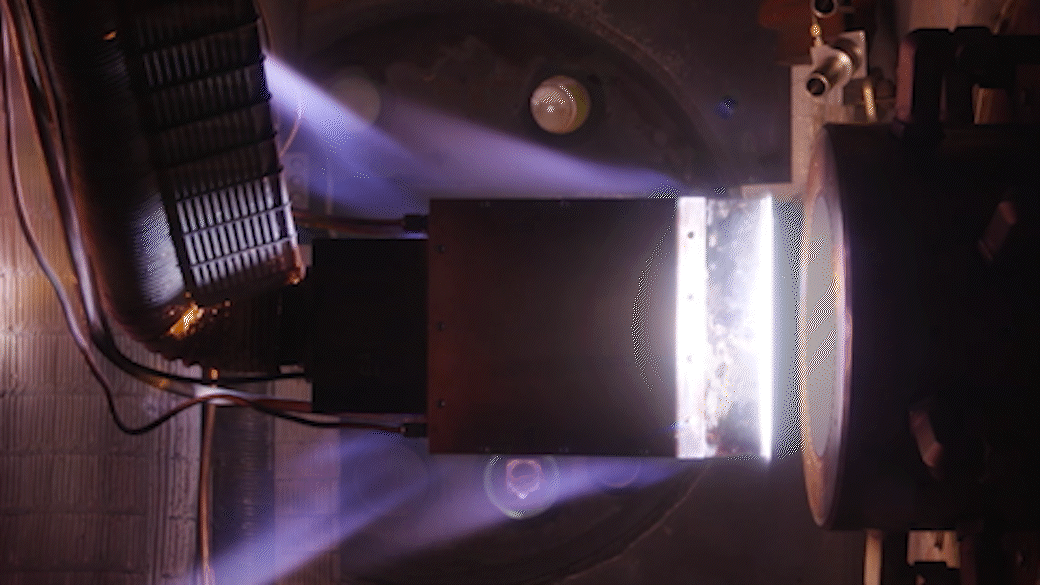
When the convective and radiant heating are combined, they affect the heat shield differently than either does alone. Teams at Ames developed a way to simulate both at once in the arc jet facility, where extremely hot and fast-moving gases flow over a test object to approximate the heating a spacecraft experiences when entering the atmosphere. Researchers added a powerful laser heat source, which simulates radiant heating, to the convective heaters already in use. With both types of heating in play, the Ames tests of the spacecraft’s entry were the most realistic yet.
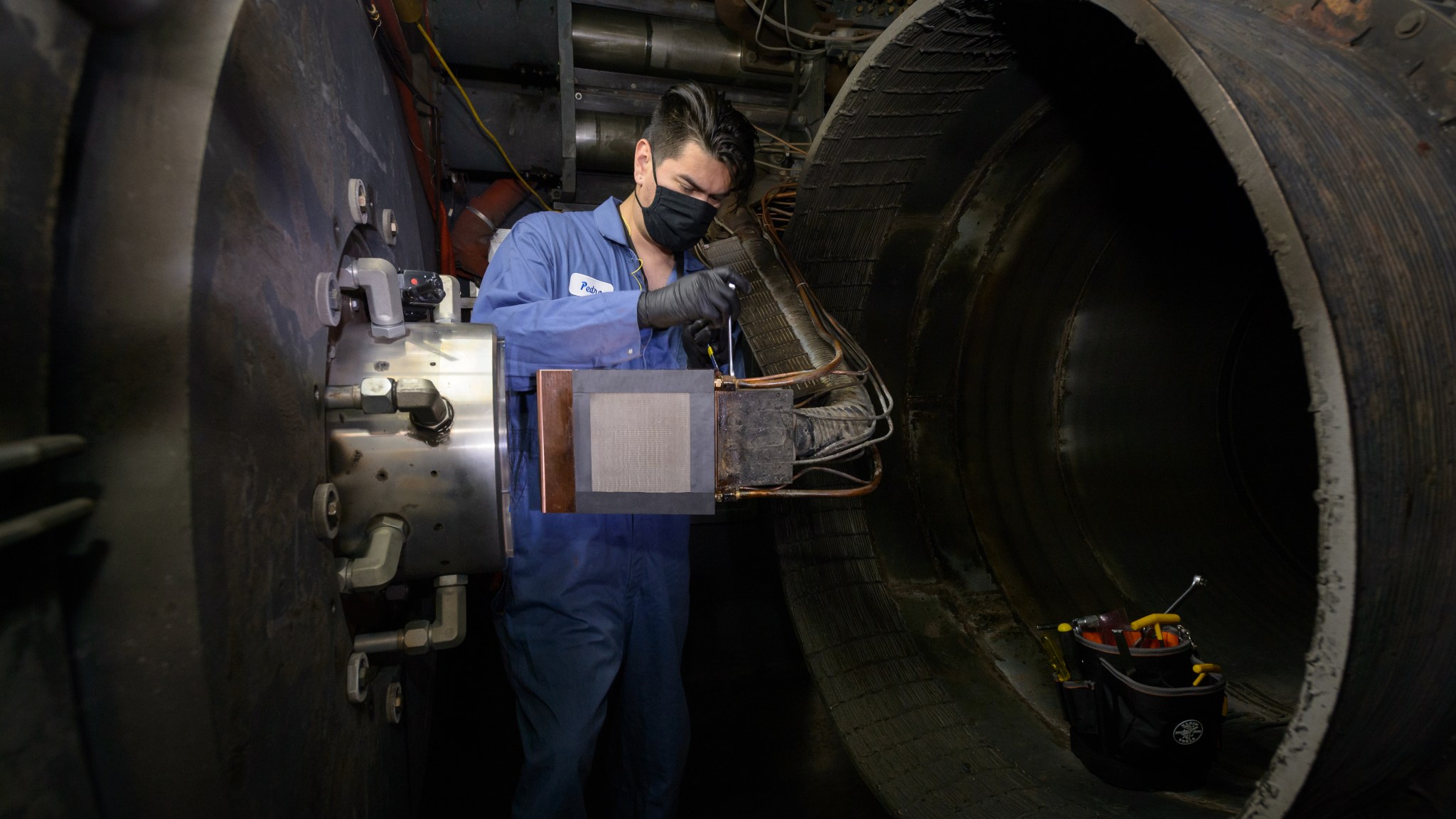
The team first examined the material making up the bulk of Orion’s heat shield, called Avcoat. They then focused on the material used at locations on the heat shield where the Orion crew module and service module connect. The second material, pictured in tests here, is a new material invented at Ames, the 3-Dimensional Multifunctional Ablative Thermal Protection System, or 3DMAT. It combines the ability to withstand the heating of atmospheric entry with extremely high strength, and will fly for the first time as part of the upcoming uncrewed Artemis I flight test.
New Era Begins as Drone Traffic Management Project Wraps Up
by Abigail Tabor
The way we move around cities of the future may be built on it.
Great promise lies within it – for more efficient agriculture, more effective disaster response, smoother package delivery, and much more.
And, now, its job completed, NASA’s Unmanned Aircraft Systems Traffic Management project, or UTM, is passing the torch.
UTM was a research project exploring all the elements needed to manage flights of the small, uncrewed aircraft commonly known as drones. The result was something totally new: an automated, decentralized system capable of coordinating an ever-growing number of flights.
Here’s a brief look at how the NASA team worked with partners from commercial industry and the Federal Aviation Administration, or FAA, to invent a whole new type of air traffic management.
Year 1: Getting off the Ground
The UTM team set a series of increasingly ambitious goals for managing drone traffic and spent the year between each step designing and developing the necessary technologies. They called these four annual targets “technical capability levels,” or TCLs. The UTM research really got off the ground in August 2015 with the first annual flight test, TCL1, at NASA’s Ames Research Center in California’s Silicon Valley.
The team looked at ways drones could be used for rural operations within the pilot’s line of sight. The tests showed how drones flying in this setting could interact – with each other and the UTM software – as they performed different tasks. In the hypothetical scenario studied, one drone was taking photos of a wedding, while others surveyed a corn field. TCL1’s technologies focused on “rules of the road” for these aircraft, ways to schedule their flight plans, and geofencing, or designating a three-dimensional segment of the sky in which each drone flies.
The following April, UTM “left home” and went for additional testing at six FAA sites around the country. Drone operators flew four vehicles simultaneously at each test site while interacting with the UTM platform, which checked the flight plans for conflicts, and approved or denied them. It also notified users of any constraints, such as challenging weather conditions like wind. Using UTM, team members remotely monitored flight activities at the test sites in Alaska, North Dakota, New York, Nevada, Texas, and Virginia.
Year 2: Outta Sight!
The test flights were out of sight in the second year of testing – literally. During TCL2, pilots flew drones farther than they could see them, over sparsely populated areas. Pictured here is a drone in flight at the FAA test site at Reno-Stead Airport, Nevada, in October 2016.
The researchers tested technologies for on-the-fly adjustment of the designated area in which a given drone can be flown, and for clearance of airspace for priority operations. This dynamic replanning of flights would let a drone monitoring traffic, for example, be reassigned in real time to aid in a search-and-rescue operation.
Year 3: Preparing for People
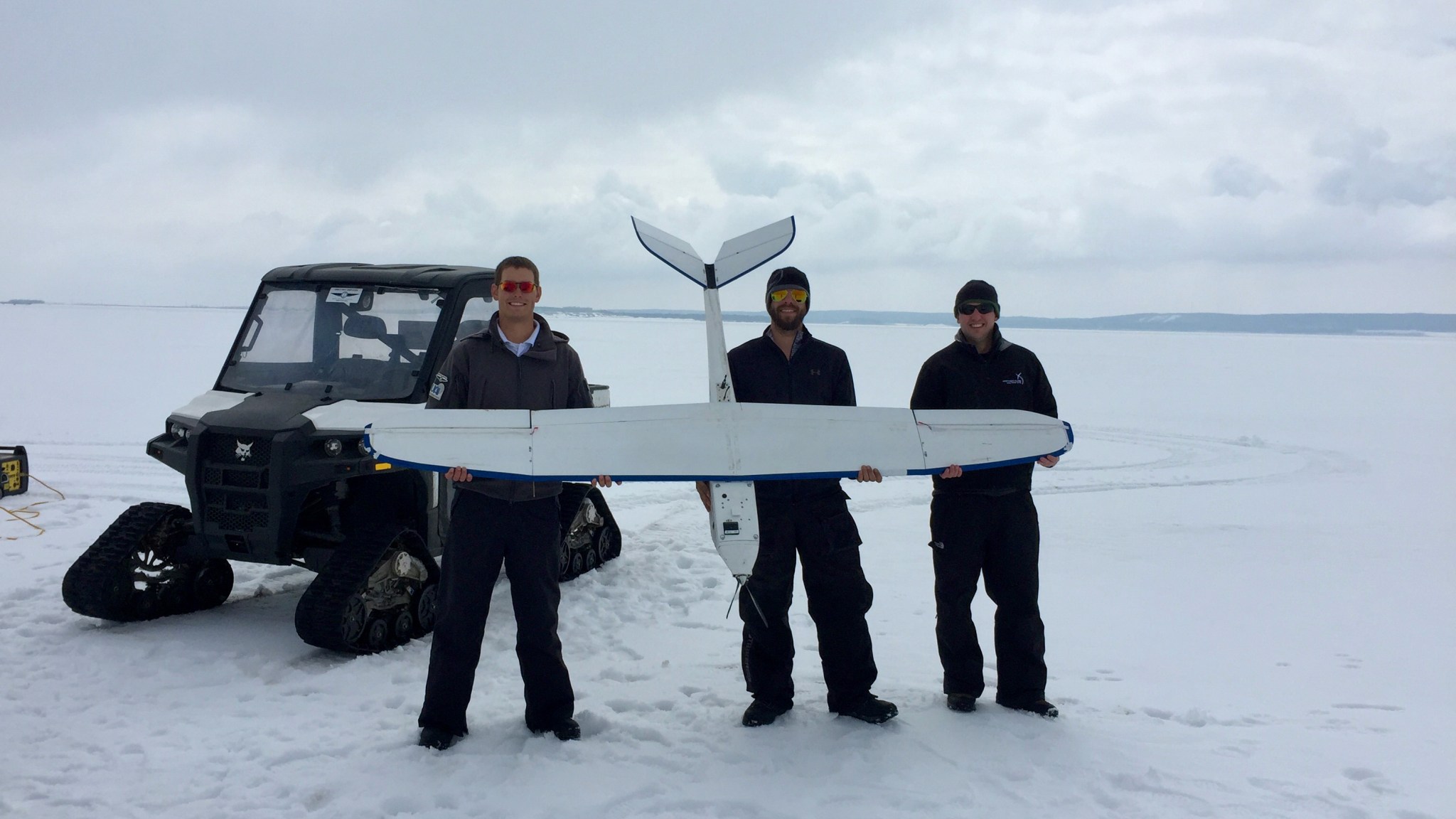
While continuing to study UTM’s solutions in the controlled environments of the FAA’s test sites – including in a wintry North Dakota landscape – the suburbs were on UTM’s mind for the third year of flight tests. The question was: what will it take to let drones fly safely around people? That is, in moderately populated areas and, again, beyond the pilot’s line of sight. During TCL3, for suburban uses – such as package delivery or public safety, like assisting the fire department’s response to a blaze – the team tested technologies for drones to detect and avoid each other and to help keep them safely spaced out and flying in their designated zones.
By allowing pilots to define the limits they plan to fly within and notifying all other pilots in the area, the UTM system can help keep all flights safely separated – a big step toward allowing them to operate in the airspace.
Year 4: Ready for the Big City
In UTM’s fourth and final year, the team was ready to hit the big city. Reno, Nevada, and Corpus Christi, Texas, became venues for testing traffic management tools needed to fly drones safely in densely populated urban areas. A drone is pictured here flying in downtown Reno for street-level testing in May 2019.
Cities come with unique challenges, and the UTM system and new technologies both onboard the drones and on the ground were tested in TCL4 to address these. More localized weather predictions were integrated into flight planning. Cell phone networks were used to enhance drone traffic communications. Cameras, radar, and other ways of “seeing” ensured drones could maneuver around buildings and land when needed. And, while all this was going on, the aircraft were communicating with each other and with users of the UTM system.
Onward and Upward with UTM
As the UTM project neared completion, during a final technical exchange meeting, the FAA described UTM as “…not only groundbreaking but really forging the future of aviation.” The UTM team had invented an entirely new way of handling the airspace: a style of air traffic management where multiple parties work together to provide services. UTM’s research results were transferred in stages to the FAA, which continues testing and is implementing the system with industry partners.
By the time the project officially wrapped up in May 2021, several efforts had already emerged to apply UTM’s concepts and capabilities to even more realms such as managing traffic for the flying taxis envisioned for our cities, and flights of jets and even balloons at very high altitudes not currently covered by traditional air traffic management. Onward and upward!
What is NASA’s Payload Accelerator for CubeSat Endeavors Initiative?
by Gianine Figliozzi
NASA’s PACE initiative supports a rapid cadence of flight demonstrations, aiming to speed up advances in the state-of-the-art for new small spacecraft technologies.
New small spacecraft technologies could transform future deep space mission capabilities and bring down mission costs. NASA’s Payload Accelerator for CubeSat Endeavors, or PACE, initiative is finding ways to speed up the process of getting small spacecraft technologies ready for prime time.
NASA needs to ensure new technologies are sufficiently vetted to stand up to the extreme demands of the space environment before implementing them for an exploration mission. This vetting process, called technology maturation, is accomplished through repeated design, assembly, and testing cycles. Flight tests are key to this process, which culminates with a technology demonstration in space.
PACE’s goal is to mature technology payloads, from early-stage proof-of-concept models to flight qualification for an operational space mission, all while shortening technology testing timelines.
Fly Often
The PACE initiative supports flight demonstrations, facilitating suborbital and orbital launches for technology payloads.The initiative reduces the cost, risk, complexity, and/or time required to mature technology, lowering the barriers to development. Getting more technology payloads tested in flight more frequently helps researchers iterate their designs faster.
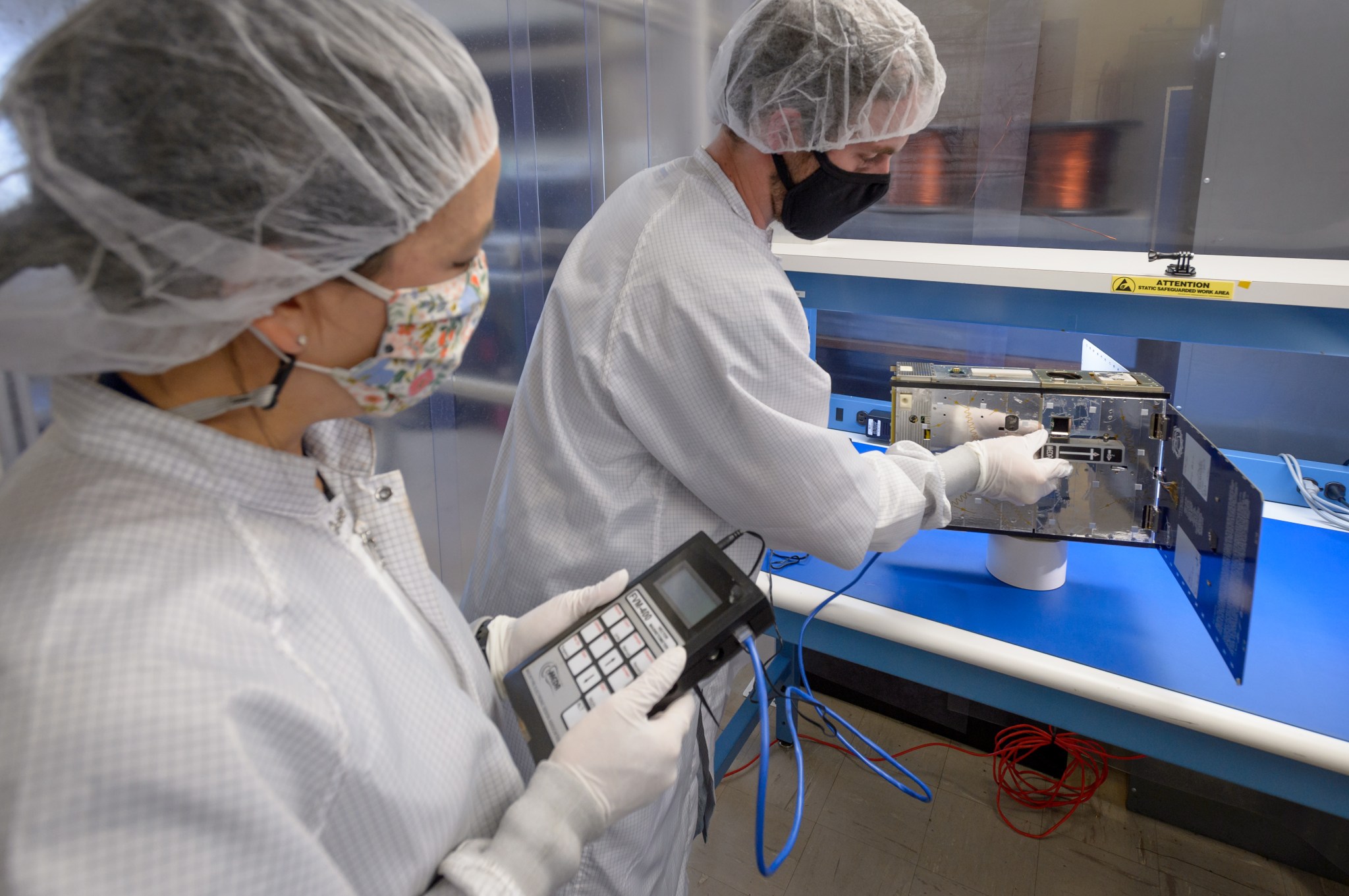
PACE uses a flexible approach to accommodate a wide range of projects to fly as many new technologies as possible, particularly early-stage, higher-risk innovations. A variety of flight platforms – independent, commercial, or NASA’s Advanced Development Projects, or ADP, avionics system platform – can host payloads on PACE flights.
Early Flights
The first orbital technology demonstration facilitated by PACE, called V-R3x, flew an independent free-flying nanosatellite platform comprised of a trio of one-unit CubeSats, each about the size of a coffee mug. PACE’s second orbital flight will host payloads on NASA’s ADP avionics system platform.
ADP’s platform is a modular, low-cost avionics architecture paired with commercial off-the-shelf CubeSat components. PACE’s second orbital flight mission, PACE-1, will perform a set of experiments to demonstrate the ADP technology, kicking off a series of flights to follow. The PACE team will develop, test, and operate the projects, each utilizing the ADP platform. Payloads for PACE missions come from within NASA or other US Government agencies, small businesses and other industry, academic institutions, and research laboratories. In addition to demonstrating the ADP architecture, PACE-1 also supports four technology payloads.
ADP’s avionics core is currently built into a six-unit CubeSat form but can adapt to other form factors. The core provides the supporting systems to operate the spacecraft and the payloads it carries. The satellite is roughly the size of two large loaves of bread, stacked side-by-side. The avionics core occupies a third of the spacecraft’s interior, leaving plenty of room to integrate various payloads.
ADP first flight will demonstrate a switching capability that allows multiple GPS and radio communications systems to “take turns” receiving signals. These systems use a single antenna attached to the spacecraft rather than using multiple dedicated antennas, as it’s typically done. For the PACE-1 spacecraft, this means that the amount of surface space needed for antennas is cut in half, freeing up space for surface-mounted payloads such as an attached radio frequency tag and optical experiments hardware
Components of ADP’s supporting avionics can be configured for use in earlier-stage tests, such as benchtop lab tests or suborbital flights. This flexible approach simplifies the logistics of testing payloads in different test environments, helping researchers speed their technologies through the maturation process.
Future Flights
NASA plans to launch a series of PACE ADP orbital missions every six to nine months. The first three PACE ADP flights will launch to low-Earth orbit. Later flights aim to demonstrate technologies in deeper space, with the fourth flight targeting a Geostationary Transfer Orbit (GTO).
GTO is a highly elliptical type of orbit that passes through the Van Allen Belts – a high radiation region of space that encircles Earth – and is certain to dose spacecraft with serious amounts of radiation. PACE plans to fly spacecraft in GTO to test the resilience of ADP spacecraft subsystems and various payload technologies in worst-case high radiation environments. Technology demonstrations in GTO will help us to better prepare for deep space exploration to destinations such as the Moon or Mars, where we are sure to encounter higher radiation than low-Earth orbit.
Milestones:
- Jan. 24, 2021: PACE’s first project, V-R3x, launched a swarm of three CubeSats to low-Earth orbit aboard SpaceX’s Transporter-1 mission to demonstrate new technologies and techniques for radio networking and navigation.
- Mar. 12, 2021: The V-R3x suborbital mission flew a CubeSat on a high-altitude balloon launched by Raven Aerostar to test communication between the satellite at the upper edges of the atmosphere and four units deployed on the ground.
- No earlier than Jun. 29, 2021: The PACE-1 mission will launch to low-Earth orbit aboard SpaceX’s Transporter-2 mission. This will demonstrate the ADP technology. ADP experiments will test communications and navigation functions. The mission carries four payloads: Intrepid, a low-cost, lightweight gamma and neutron particle detector and spectrometer; ADP Optical Retroreflectors, an assembly of optical reflectors to assist in laser tracking; Stellar Exploration RFID Tag, an active modulating radio frequency reflector that improves the ability of space object tracking radars to detect and track small satellites; and the Naval Information Warfare Center Nanosatellite Tracking Experiment, a passive radar retro-reflector that improves the ability of space object tracking radars to detect and track small satellites.
PACE Collaborators:
- PACE is managed by NASA’s Ames Research Center in California’s Silicon Valley and is funded by the Small Spacecraft Technology program within NASA’s Space Technology Mission Directorate.
- Suborbital flights for PACE missions are supported by NASA’s Flight Opportunities program, based at NASA’s Armstrong Flight Research Center in Edwards, California and funded by STMD.
- Orbital flights for PACE missions are supported by NASA’s CubeSat Launch Initiative, managed by the Launch Services Program at NASA’s Kennedy Space Center in Florida, and funded by the Advanced Exploration Systems division within NASA’s Human Exploration and Operations Mission Directorate.
- V-R3x is a collaboration between PACE and the Robotic Exploration Lab, or REx Lab. The REx Lab was previously at Stanford University in California and is now based at the Robotics Institute at Carnegie Mellon University in Pittsburgh, Pennsylvania, led by Zac Manchester. V-R3x is based on PyCubed, an open-source small-satellite framework that integrates hardware and software solutions for CubeSat and PocketQube applications, and is developed by Max Holliday at Stanford University.
- The ADP platform is developed by the PACE team at Ames; Dayne Kemp is the principal investigator.
- PACE-1 payloads:
- The Intrepid payload is developed by Ames; Dayne Kemp is the principal investigator.
- The ADP Optical Retroreflectors payload is developed using commercially purchased optical retroreflectors by Ames: Jan Stupl is the principal investigator.
- Stellar Exploration RFID Tag payload is developed by Stellar Exploration Inc. in San Luis Obispo, California; David Troy is the principal investigator.
- Naval Information Warfare Center Nanosatellite Tracking Experiment payload is developed by the Naval Information Warfare Center in San Diego, California.; Shawn Kocis is the principal investigator.
Looking to the Clouds to Improve Climate Models for Earth and Other Planets
by Nicole Quenelle
How do clouds contribute to climate patterns on Earth, as well as other planets like Saturn, Venus, and Mars? This question motivated NASA’s development of a new nephelometer – a sensor that measures details about the interior composition of clouds. The device is being tested here on Earth and could one day be deployed to the far reaches of space to advance our understanding of climate patterns across our solar system.
Called NephEx – short for Nephelometer Experiment – the new device from NASA’s Ames Research Center in California’s Silicon Valley measures light scattering by airborne particles, including cloud droplets and ice particles. Using such data, devices like NephEx could tell scientists about the state of a cloud’s formation and under what conditions clouds form. Nephelometers like NephEx can also provide information about a cloud’s water content, as well as a cloud’s impact on a planet’s atmosphere or thermal and radiation environments. This data also supplements common techniques for cloud and climate monitoring, such as remote sensing via satellite.
“Remote sensing data is extremely important because it quickly gives us a global picture of clouds and climate, but it’s limited to only the outermost surface of clouds,” said Dr. Anthony Colaprete, principal investigator for NephEx. “By flying a nephelometer directly into the clouds, we add the ability to validate remote sensing data and gather more detailed information.”
This capability can make modeling and prediction of climate patterns even more accurate. In addition, the small size of NephEx means that those data refinements and validations could happen more easily and more often on more types of platforms for Earth-based climate research.
On June 11, 2021 researchers tested NephEx for the first time outside of a ground-based laboratory by launching it aboard a high-altitude balloon in Baltic, South Dakota. The flight was provided by Raven Aerostar of Sioux Falls with funding from NASA’s Flight Opportunities program. The balloon carried the sensor to a float altitude of about 70,000 feet for approximately two hours and into cloud formations to gather data about their interior compositions. The flight test provided an important step in maturing the technology and assessing its capabilities to measure the size, concentration, and distribution of cloud particles – data critical to understanding the impact of clouds on a planet’s climate.
“These Flight Opportunities-supported launches are affordable and accessible and allow us to take important, iterative steps in the technology’s development in an environment directly applicable to the way the technology would ultimately be deployed,” said Colaprete. “They give us a lot of practice and learning quickly to ultimately arrive at a better final product.”
Field testing provided by Flight Opportunities is important for readying promising innovations for riskier or more expensive planetary missions, like those in NASA’s New Frontiers and Discovery programs. In the case of NephEx, these include potential future missions to Venus, where scientists hope to deploy balloons to study the atmosphere of Earth’s sister planet. With further testing and development, NephEx also could study the atmospheres of gas giants like Saturn and Jupiter, which are mostly composed of hydrogen and helium.
With a final flight size of about 2 x 2 x 1.5 inches, the pocket-sized NephEx will be far more compact and use significantly less power than the nephelometer aboard NASA’s Galileo probe. Launched in 1995, Galileo provided the first in-situ observations of Jupiter’s clouds.
“Galileo’s sensor was cutting edge at the time, but it was large – more than 50 inches at its widest point – and drew a lot of power – about 15 to 20 watts,” explained Colaprete. “Future deep-space missions to other planets will carry more and more instruments, and sensors will need to be really small.”
Colaprete had the idea to take advantage of advances in near infrared (IR) lasers widely used in the telecommunications industry to scale back the size of the instrument. The result of this “Aha!” moment is a two-laser system that uses IR pulses – not visible to the naked eye – to measure light scattering off of clouds to determine the concentration of the particles that comprise the clouds’ interiors. The two lasers use different wavelengths, so researchers can determine not only the cloud particles’ average size but also the distribution of each size particle throughout the clouds.
“Because of its small weight and power, we could potentially fly networks of multiple sensors on multiple aircraft simultaneously,” said Colaprete. “That could give us a true three-dimensional measurement of the full cloud state and how it changes over time, which would advance cloud observations beyond any capabilities we currently have that I know of.”
The possibilities are vast, and the seed for that potential is planted with field testing. Analyses of the data from the recent balloon flight will allow Colaprete and his colleagues to refine the design for NephEx in advance of further testing and deployment for Earth-based or planetary research.
“Observation of other planets is not just for the sake of understanding those planets,” said Colaprete. “It’s ultimately to help understand the processes that control climate across the entire solar system, including here on Earth.”
About Flight Opportunities
The Flight Opportunities program is funded by NASA’s Space Technology Mission Directorate (STMD) at the agency’s Headquarters in Washington, and managed at NASA’s Armstrong Flight Research Center in Edwards, California. Ames manages the solicitation and evaluation of technologies to be tested and demonstrated on commercial flight vehicles.
Off-Ramps to the Moon
by Abigail Tabor
When NASA’s water-hunting robot – the Volatiles Investigating Polar Exploration Rover, or VIPER – arrives on the lunar surface, it will use two folding ramps to drive off the lander in style and begin exploring the Moon. To make sure its big moment goes off without a hitch, the VIPER team recently tested those ramps at NASA’s Johnson Space Center in Houston.
Using a full-scale model of the Griffin lander that will deliver VIPER to the Moon, the team evaluated how well a rover test unit was able to move on the ramps. The results showed ways NASA’s partner, Astrobotic of Pittsburgh, can modify the ramp designs. This will ensure the rover can maneuver on them – keeping its wheels within the guardrails, for example – and make a flawless exit onto the Moon.
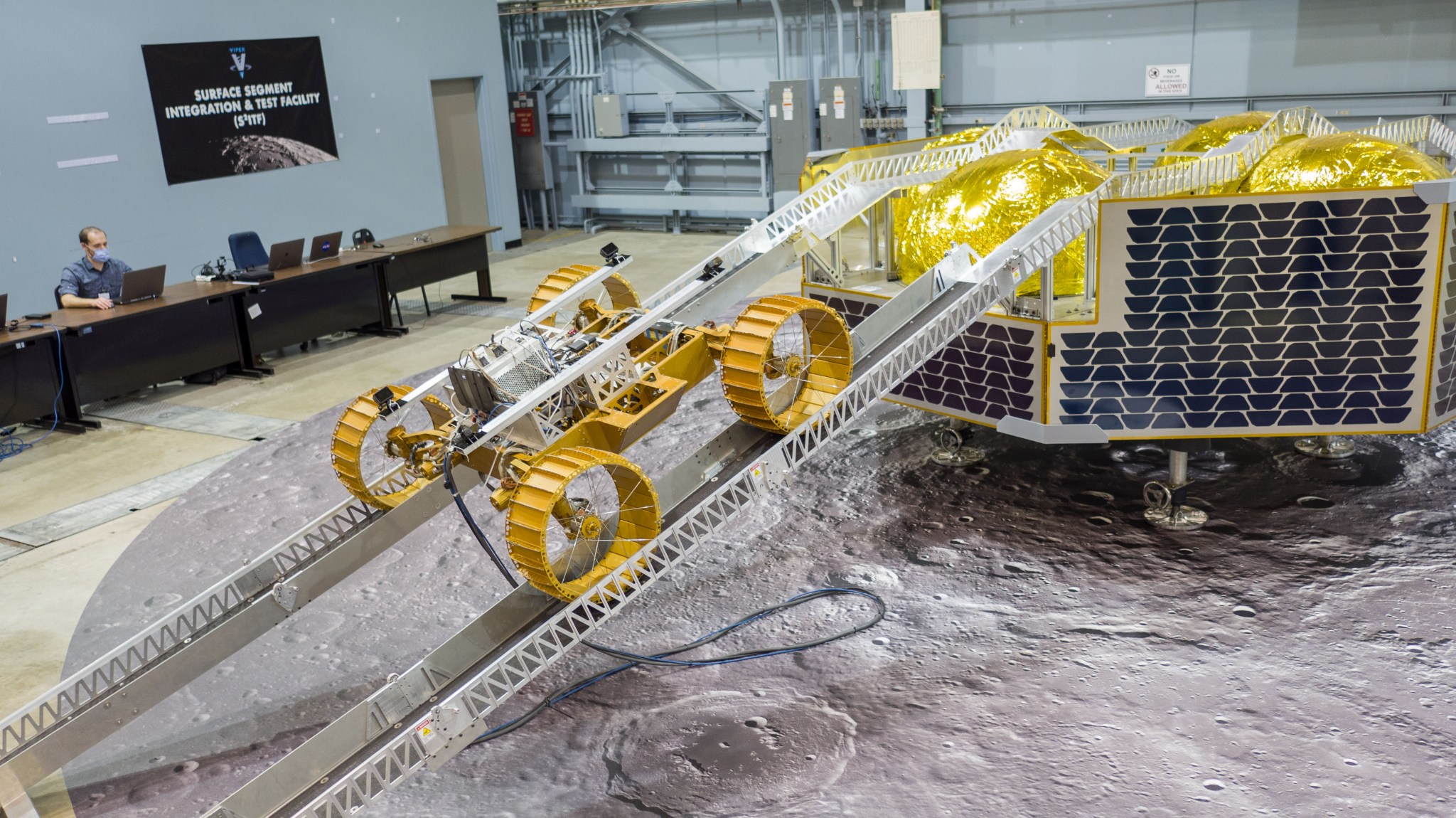
Different materials were also tested on the surface of the ramps. These tests will help inform the designers about what qualities help the rover’s wheels move smoothly and securely. VIPER successfully descended the ramps on a textured aluminum surface, high-friction sandpaper, and a high-friction elastomer – a polymer with elastic properties.
Launching in 2023, VIPER will explore the Moon’s South Pole and map its surface for water and other resources. Astrobotic will provide the Griffin lander and VIPER’s delivery to the lunar surface through the Commercial Lunar Payload Services initiative.
NASA Partners with Khaled bin Sultan Living Oceans Foundation to Expand Efforts to Map Corals
by Abigail Tabor
The ocean: it’s Earth’s largest ecosystem and the habitat for coral – one of the planet’s most unique and oldest life forms. The health of coral is vital to countless sea creatures who call it home. However, this member of the ocean world is dying at an unprecedented rate and, without thorough tracking, it’s unclear exactly how fast or how best to stop its deterioration.
That’s why NASA’s NeMO-Net, or the Neural Multi-Modal Observation and Training Network, project is on a mission to map and track the health of the world’s coral reefs and give us the best look beneath the waves we’ve ever had. To do that, they need data, which they’ve gotten with the help of tens of thousands of citizen scientists around the world playing the NeMO-Net game.
Now, NASA’s Ames Research Center in California’s Silicon Valley is partnering with the Khaled bin Sultan Living Oceans Foundation of Annapolis, Maryland, to use their extensive high-resolution data about reefs and expand NASA’s coral mapping capabilities even further.
On May 17, 2021, NASA entered a Space Act Agreement with the Living Oceans Foundation, giving the NeMO-Net team access to data from the Global Reef Expedition, one of the largest surveys of corals ever done. This 10-year research mission traveled around the world surveying and mapping one fifth of the world’s coral reefs in an effort to address the coral reef crisis. The partnership will use this massive dataset in conjunction with the neural network and the Pleiades supercomputer at Ames that powers NeMO-Net. With this combination of tools and information, NeMO-Net’s maps will become more accurate, giving researchers and environmental managers better information about what’s happening to coral reefs. This in turn, will better enable the protection of these fascinating life forms at a time when they’re at risk due to rising sea temperatures and other hazards, including overfishing, pollution, and coastal development.
In Memoriam . . .
Danielle Nicole Carmichael, Ames Speaker Bureau Coordinator, Passes Away
Courtesy of Danielle’s family
Danielle Nicole Carmichael was born to Lieutenant Brian and Delorse Carmichael, US Navy on July 28, 1986 in Savannah, Georgia.
For the first four years of her life, Danielle was an only child until she welcomed and spoiled her only brother, Brian Carmichael, Jr. She attended elementary school in San Pedro, California; Naples, Italy; and finally Latimer Elementary School in San Jose, California. Danielle then attended Castro Middle School before graduating from Oak Grove High School in 2004. While at Oak Grove, Danielle excelled in both academics and sports. She was on the honor roll and played varsity volleyball and varsity basketball. She also played club volleyball (Quicksilver) and AAU basketball (Lady Lakers).
Danielle attended San Jose State University where she earned a Bachelor of Science Degree in Environmental Studies in 2008. While at San Jose State, she was an active member of the Student Homeless Alliance and Gulf Coast Civic Works Project.
After college, she worked in retail at J. Crew where she was able to implement retail strategies to improve sales. Danielle was passionate about science and after three years working in the medical device industry, she found her calling in 2014 at NASA, where she was a team member of the Ames Office of Education. In 2017, she transitioned to the Ames Office of Communication, where she was the coordinator for the Ames Speaker Bureau. Danielle was excited to serve as on-air talent for NASA in Silicon Valley Live and was most proud of her role in encouraging students to pursue careers in science, technology, engineering, and math (STEM).
Danielle was an avid traveler and looked forward to every new adventure. Some of Danielle’s most memorable trips included a European vacation to London, Paris, and Italy; exploring the sandy beaches of Tulum and Cancun, Mexico; island and city hopping in Greece, the Czech Republic, and Hungary; and visiting La Sagrada Familia Church in Barcelona. Danielle was eager to get more stamps in her passport, and she always had another trip around the corner. Her future destinations included a birthday celebration in Las Vegas with friends and family, and her cousin’s wedding in Playa Del Carmen, Mexico. She loved nothing more than being an aunt (TiTi) and looked forward to one day taking her nephew (Brian Langston Carmichael) to one of her favorite travel destinations, Disneyland!
Danielle was a friend to everyone she met. She had a smile that could light up a room and left each space with a warmth that will forever be remembered. She truly touched so many lives and in doing so made her own life worthy.
Danielle passed away on June 3. She is preceded in death by her grandfather William Smith; grandmother Maymie Smith Stewart; and grandfather Jewette Carmichael. Left to celebrate Danielle’s life and legacy are her father Brian Carmichael; mother Delorse Carmichael; brother Brian Carmichael Jr.; nephew Brian Langston Carmichael; grandmother Wilma Carmichael; aunts Dorthea Stewart, Lauretta Dyson, Leslie Carmichael, Marian Carmichael, and Yolanda Johnson; uncles Darryle Carmichael, John Dyson, and Roosevelt Johnson; godparents Harold and Vanessa Reid; god-grandparents, Captain Donald and Callie Flowers; and many other extended family members and friends. Funeral services were held on June 18, at the Maranatha Christian Center Church, in San Jose, California.
Adoptable Cats from Ames
It’s kitten season, and we have adoptable kittens! Sol and Mani (Norse gods of the sun and moon) are bonded brothers. This adorable pair is inseparable. They constantly play, wrestle, eat, sleep, and cuddle with each other. Even when, finally exhausted from their play, they seek a human lap for a nap, they do it together. They are very affectionate, social and brave; they greet strangers happily, and enjoy being cuddled. We also have five very young kittens who will be available for adoption when they get a little older. Our kittens are very well socialized and totally comfortable with people and other cats.
We would love for all our kittens to find indoor (or primarily indoor) placements. And ideally they’d go in pairs, as this makes them happier and helps prevent behavioral issues later.
If you’re interested in adopting any of the cats, please email: mountainviewcats@yahoo.com
Visit the Ames Cat Network web site at: https://amescatnetwork.weebly.com/cats.html






























